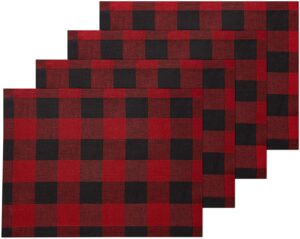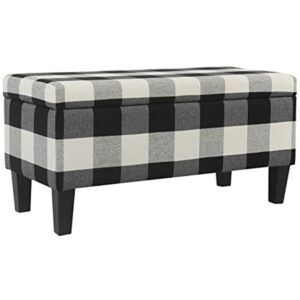Quilting is a beloved craft that has stood the test of time, but as we become more aware of the impact our actions have on the environment, there is a growing interest in incorporating sustainability into this traditional art form. From choosing eco-friendly fabrics to reducing waste and embracing upcycling, sustainability in quilting is gaining momentum. In this article, we will explore the various ways quilters can make a positive environmental impact without compromising their creativity. Whether you’re a seasoned quilter or just starting out, there are simple steps you can take to contribute to a more sustainable future through your quilting endeavors.
Understanding Quilting’s Environmental Impact
Quilting is a beloved craft that not only allows you to express your creativity but also create something functional and beautiful. However, it is important to understand the environmental impact of quilting and how we can make sustainable choices to reduce our footprint. This article will explore the various materials used in quilting, energy consumption during the quilting process, and the waste produced in quilting.
Materials used in quilting
Quilting requires a variety of materials, including fabric, batting, and thread. It is essential to choose materials that are sustainable and environmentally friendly. One option is to opt for organic cotton fabric, which is grown without the use of harmful pesticides and chemicals. Another sustainable choice is to use recycled fabric, which reduces waste and gives new life to old textiles. Finally, consider using sustainable batting made from natural fibers such as bamboo or hemp, which have a lower environmental impact compared to synthetic materials.
Energy consumption in quilting
Energy consumption is another significant factor to consider when examining the environmental impact of quilting. Traditional quilting methods such as hand quilting require no electricity, making it the most energy-efficient option. However, if you prefer using a sewing machine for quilting, consider investing in a solar-powered machine. These machines utilize renewable energy and significantly reduce your carbon footprint. Additionally, practicing energy-saving tips such as using efficient lighting and turning off machines when not in use can further minimize energy consumption during quilting.
Waste production in quilting
The production of waste is inherent to quilting, but there are strategies to minimize waste and promote sustainability. Efficient pattern layout is crucial to maximizing the use of fabric and reducing waste. By carefully planning and cutting fabric pieces, you can avoid excessive scraps that end up unused. Another way to combat waste production is to repurpose fabric scraps. Small pieces of fabric can be used for patchwork or even incorporated into new quilting projects. Finally, if you have old quilts that are no longer in use, consider recycling them by turning them into new quilts or donating them to someone in need.
Promoting Sustainable Practices in Quilting
Now that we have explored the environmental impact of quilting, let’s delve into how we can actively promote sustainable practices in our quilting projects. By adopting eco-friendly materials, implementing energy-efficient quilting techniques, and focusing on waste minimization strategies, we can make a positive difference for the planet.
Adopting eco-friendly materials
As mentioned earlier, choosing eco-friendly materials is vital for sustainable quilting. Organic cotton is an excellent choice as it is free from harmful chemicals and promotes better soil health. Look for fabric that is certified organic to ensure its authenticity. Additionally, recycled fabric is a sustainable option that not only reduces waste but also brings a unique character to your quilts. Consider repurposing old garments or sourcing fabric from thrift stores. Finally, sustainable batting made from renewable resources like bamboo or hemp provides a greener alternative to polyester batting.
Energy-efficient quilting methods
Reducing energy consumption is an important step towards sustainable quilting. Hand quilting is not only a traditional and time-honored method but also the most energy-efficient choice. By using only your hands and a needle, you eliminate the need for electricity altogether. However, if you prefer using a quilting machine, consider investing in a solar-powered one. These machines use renewable energy and can significantly reduce your environmental impact. Additionally, practicing energy-saving tips such as using LED lights and turning off machines when not in use can further decrease your energy consumption.
Reducing, reusing, and recycling in quilting
Waste minimization is an essential aspect of sustainable quilting. By implementing efficient pattern layout techniques, you can maximize fabric usage and reduce waste. Carefully plan your cuts to avoid unnecessary scraps that end up unused. For the leftover fabric scraps, think creatively and find ways to repurpose them. Patchwork projects or small quilting projects like coasters or mug rugs are great ways to utilize these scraps. Lastly, if you have quilts that are no longer in use, consider recycling them by turning them into new quilts or donating them to someone in need.
Eco-Friendly Materials for Quilting
When it comes to quilting, selecting the right materials is crucial for sustainability. By opting for eco-friendly materials, you can minimize the environmental impact of your quilting projects.
Organic cotton
Organic cotton is a sustainable choice for quilting. It is grown without the use of harmful pesticides and chemicals, which not only protects the environment but also safeguards the health of farmers and workers involved in the cotton industry. Organic cotton is softer and more breathable than conventionally grown cotton, making it a preferred choice for quilts that provide comfort and warmth while being environmentally friendly.
Recycled fabric
Using recycled fabric in your quilting projects is an excellent way to reduce waste and give new life to old textiles. There are various sources for recycled fabric, including thrift stores, second-hand shops, and even your own closet. Look for garments or fabric remnants that can be repurposed into quilt blocks or turned into quilt backing. Choosing recycled fabric not only helps the planet by minimizing textile waste but also adds a unique and vintage touch to your quilts.
Sustainable batting
Batting, the layer of material between the quilt top and backing, also plays a role in the sustainability of quilting. Consider using sustainable batting made from natural fibers such as bamboo or hemp. These materials are renewable and have a lower environmental impact compared to synthetic options like polyester batting. Bamboo batting offers excellent breathability and moisture-wicking properties, while hemp batting provides durability and longevity to your quilts. Choosing sustainable batting contributes to a greener quilting practice while maintaining the quality and performance of your quilts.
Energy-Efficient Quilting Techniques
Reducing energy consumption is a significant aspect of sustainable quilting. By adopting energy-efficient quilting techniques, you can minimize your carbon footprint and contribute to a greener future.
Hand quilting
Hand quilting is the most energy-efficient quilting technique, as it requires no electricity. This traditional and time-honored method involves sewing stitches through the quilt layers using a needle and thread. Hand quilting allows you to savor the process, appreciating each stitch and adding a personal touch to your quilts. It not only reduces energy consumption but also provides a sense of connection to the quilting heritage and tradition.
Solar-powered machines for quilting
If you prefer using a quilting machine, consider investing in a solar-powered one. Solar-powered machines utilize renewable energy from the sun, reducing your reliance on electricity. These machines function as effectively as traditional electric machines but with a significantly lower environmental impact. By harnessing the power of the sun, you can quilt with confidence, knowing that you are minimizing your carbon footprint and preserving valuable energy resources.
Energy-saving tips for quilters
Even when using traditional electric sewing machines, there are energy-saving tips and practices that can be implemented to minimize energy consumption. Replace traditional incandescent light bulbs with energy-efficient LED lights, which use significantly less energy and have a longer lifespan. Use natural light whenever possible by positioning your quilting space near a window. Additionally, turn off the sewing machine and other electrical devices when not in use. These small changes can add up to significant energy savings over time and contribute to a more sustainable quilting practice.
Waste Minimization Strategies in Quilting
Minimizing waste is a key element of sustainable quilting. By implementing waste minimization strategies, you can reduce the amount of fabric and materials that go unused, creating a more environmentally friendly quilting practice.
Efficient pattern layout
Efficient pattern layout is essential for maximizing fabric usage and minimizing waste. Carefully plan your cuts and arrange pattern pieces on the fabric to minimize leftover scraps. Take measurements and calculate how many quilt blocks or pieces can be cut from each fabric piece. By being intentional with your layout, you can optimize fabric utilization and avoid unnecessary waste.
Reusing fabric scraps
When quilting, fabric scraps are inevitably generated. Instead of discarding these scraps, find creative ways to reuse them in other quilting projects. Patchwork projects are a great option, as you can use small fabric scraps to create unique quilt blocks or designs. Alternatively, consider making small quilting projects like coasters, mug rugs, or even fabric jewelry using fabric scraps. By repurposing and utilizing the scrap fabric, you can minimize waste and add a personal touch to your quilting projects.
Recycling old quilts
If you have old quilts that you no longer use or find damaged quilts, consider recycling them instead of throwing them away. Depending on the condition of the quilt, you can repurpose it by turning it into smaller quilts or quilt blocks. Donating old quilts to charitable organizations or individuals in need is another great way to give them a new life. Recycling old quilts ensures that they do not end up in landfills and allows others to enjoy their beauty and warmth.
Community-Based Quilting for Sustainability
Community-based quilting is a wonderful way to promote sustainability and create a sense of togetherness. By coming together as a quilting community and engaging in collaborative projects, we can make a positive impact on the environment while fostering connection and support.
Quilting bees
Quilting bees are gatherings where quilters come together to work on quilts collaboratively. These events provide opportunities to share skills, learn from one another, and collectively contribute to sustainable quilting. By organizing quilting bees focused on using sustainable materials and techniques, we can raise awareness and inspire others to adopt more environmentally friendly practices. Quilting bees foster camaraderie, creativity, and sustainability within the quilting community.
Sharing resources among quilters
Sharing resources among quilters is an excellent way to promote sustainability. Introducing a culture of resource sharing within the quilting community allows individuals to borrow or trade tools, fabric, or even quilting machines, reducing the need for everyone to individually purchase these items. This practice not only minimizes resource consumption but also promotes a sense of community and support among quilters. By sharing resources, we reduce waste, save money, and build stronger connections within the quilting community.
Creating quilts as community projects
Creating quilts as community projects is a meaningful way to promote sustainability and engage with the local community. Encourage community members to participate in quilt-making projects that focus on sustainable materials and techniques. These projects can be centered around specific themes or causes, such as creating quilts for local shelters or hospitals. By involving the community, we can raise awareness about sustainable quilting, foster a sense of unity, and make a positive impact on both people and the planet.

Sustainability in Quilting Supply Chains
Sustainability in quilting goes beyond individual actions; it also extends to the supply chains involved in the production and distribution of quilting materials. By supporting ethical sourcing, local producers, and responsible shipping and packaging, we can contribute to a more sustainable quilting industry.
Sourcing materials ethically
When buying quilting materials, it is important to consider the ethical sourcing practices of the brands and suppliers you choose. Look for companies that prioritize fair trade, environmentally friendly practices, and the well-being of their workers. Many quilting fabric brands now offer organic and ethically sourced fabric options, allowing you to make sustainable choices. By supporting businesses that prioritize ethical sourcing, we encourage responsible practices throughout the supply chain.
Supporting local producers
Supporting local producers is another way to promote sustainability in quilting. Look for fabric and quilting supplies that are locally produced, reducing the carbon footprint associated with long-distance shipping. Local producers often have smaller-scale operations and are more likely to prioritize sustainable practices. By supporting local businesses, we not only contribute to the local economy but also minimize the environmental impact of our quilting materials.
Responsible shipping and packaging
When purchasing quilting materials online, pay attention to the shipping and packaging practices of the suppliers. Look for companies that use eco-friendly packaging materials, such as recycled or biodegradable packaging. Additionally, choose suppliers that consolidate shipments to reduce the number of individual packages and optimize transportation efficiency. By supporting suppliers with responsible shipping and packaging practices, we can contribute to a more sustainable quilting industry.
Educating Quilters on Sustainability Issues
Education plays a crucial role in promoting sustainable quilting practices. By providing opportunities for quilters to learn about sustainability issues through quilting guilds, workshops, classes, and online resources, we can empower individuals to make informed choices and embrace a more sustainable approach to quilting.
Quilting guilds and sustainability
Quilting guilds are excellent platforms to raise awareness and educate quilters about sustainability issues. Organize guild meetings or events focused on sustainable quilting practices, featuring guest speakers, workshops, or panel discussions. Encourage guild members to share their experiences and knowledge, fostering a collaborative learning environment. By incorporating sustainability into the activities and discussions within quilting guilds, we can inspire and empower quilters to adopt greener practices.
Sustainable quilting workshops and classes
Hosting sustainable quilting workshops and classes provides hands-on learning opportunities for quilters of all skill levels. These workshops can cover various topics such as eco-friendly materials, energy-efficient techniques, waste minimization strategies, and sustainable design principles. By providing practical demonstrations, tips, and techniques, participants can gain the knowledge and skills needed to incorporate sustainability into their quilting practice. Sustainable quilting workshops and classes create spaces for learning, creativity, and inspiration.
Online resources for sustainable quilting
Online resources are valuable tools for educating quilters about sustainability issues. Websites, blogs, and social media platforms dedicated to sustainable quilting provide a wealth of information, tips, and inspiration. These resources often cover topics such as sustainable materials, energy-efficient techniques, waste minimization strategies, and even sustainable quilting patterns. Quilters can access these resources at their convenience, enabling them to continuously educate themselves and make informed choices for a more sustainable quilting practice.

Sustainable Quilting in Business and Industry
The quilting industry, including quilting retailers and manufacturers, has a role to play in promoting sustainability. By embracing eco-friendly practices, adopting sustainable manufacturing techniques, and using sustainability as a marketing strategy, businesses can contribute to a more sustainable quilting ecosystem.
Quilting retailers and sustainability
Quilting retailers can make a difference by prioritizing sustainability in their product offerings and practices. By curating a selection of eco-friendly materials and supplies, retailers can inform and educate their customers about sustainable options. Additionally, retailers can adopt sustainable business practices, such as reducing packaging waste, offering recycling programs, and promoting resource sharing among quilters. By actively promoting sustainability, quilting retailers can inspire and empower their customers to make greener choices.
Eco-friendly manufacturing in the quilting industry
Manufacturers in the quilting industry have the opportunity to adopt eco-friendly manufacturing practices. This includes sourcing sustainable materials, reducing energy and water consumption during production, and minimizing waste through efficient production processes. Additionally, manufacturers can prioritize the use of eco-friendly dyes and chemicals to reduce their environmental impact. By aligning their manufacturing processes with sustainability principles, the quilting industry can make significant strides towards a greener and more responsible future.
Sustainability as a marketing strategy in the quilting business
Sustainability can be a powerful marketing strategy in the quilting business. By clearly communicating and promoting the eco-friendly aspects of quilting products, businesses can attract environmentally conscious customers. This includes highlighting the use of organic or recycled materials, energy-efficient manufacturing techniques, and waste minimization practices. By incorporating sustainability as a core value and actively promoting it, quilting businesses can differentiate themselves in the market and appeal to consumers who prioritize sustainable choices.
Future of Sustainable Quilting
The future of sustainable quilting holds exciting possibilities. As technology advances, sustainability trends evolve, and policies promote greener practices, the quilting community can continue to make progress towards a more sustainable future.
Technological innovations for sustainable quilting
Technological advancements can play a significant role in sustainable quilting. Research and development in the quilting industry can focus on creating energy-efficient machines, developing sustainable materials with improved performance, and inventing new techniques to reduce waste. By embracing technological innovations for sustainable quilting, we can further minimize the environmental impact of our craft while expanding creative possibilities.
Sustainability trends in quilting
Sustainability trends in the quilting industry are likely to continue evolving. As consumers become increasingly aware of environmental issues, the demand for sustainable quilting products and practices will likely rise. This may include an increase in the availability of organic and recycled fabrics, the development of new sustainable batting options, and the emergence of innovative waste reduction techniques. By staying informed about sustainability trends, quilters can embrace new opportunities for greener quilting practices.
Role of policy in promoting sustainable quilting practices
Government policies and regulations can also play a critical role in promoting sustainable quilting practices. This includes incentivizing sustainable manufacturing processes, supporting research and development in eco-friendly materials, and implementing standards for waste reduction and resource conservation. By enacting policies that prioritize sustainability, governments can create an enabling environment for the quilting industry to operate in a more responsible and environmentally friendly manner.
In conclusion, understanding the environmental impact of quilting is essential for promoting sustainability in the craft. From the materials used to the energy consumption and waste production, there are various opportunities for quilters to make a positive difference. By adopting eco-friendly materials, implementing energy-efficient techniques, minimizing waste, and embracing sustainable practices at all levels of the quilting community, we can ensure a greener and more sustainable future for quilting. Whether you are a beginner or an experienced quilter, there are countless ways to contribute to sustainable quilting and make a positive impact on the planet.























